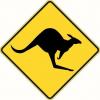I would just ask, are you better at it than you were last week? or last month?
If so, it might simply be a matter of more practice. You can certainly experiment with hand grip and all the other things mentioned above but what ever you do, it has to be comfortable to you or you'll never get there.
Japanese saws are great but just like western saws, once you get a "feel" for them, you're well on your way.
Keep at it, it doesn't come to everyone in the same timeframe.






 Reply With Quote
Reply With Quote
 , just been a while - been working in metal for a bit now, and want to start putting together a proper bench.
, just been a while - been working in metal for a bit now, and want to start putting together a proper bench.




